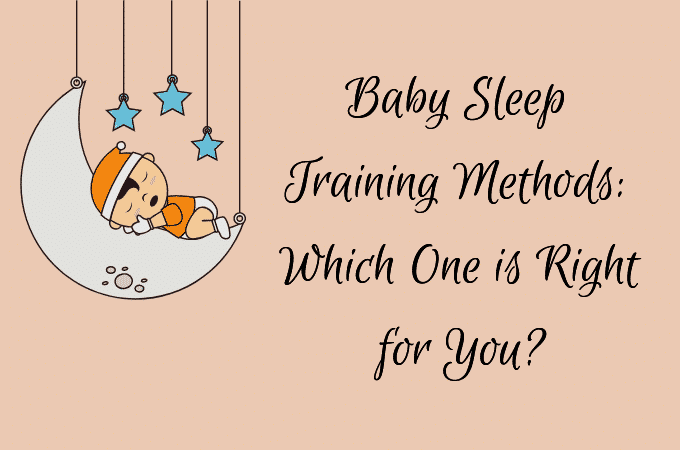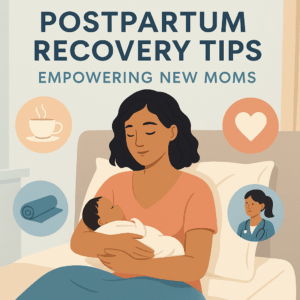Baby Sleep Training Methods: Which One is Right for You?

Establishing your baby’s sleeping habits is an important part of early development. Teaching him how to fall asleep and stay asleep through good practices will lay the foundation for how they sleep when they are older. With different methods and opinions of sleep training out there, parents can easily become overwhelmed by conflicting information. We’re here to help inform you about the different sleep training methods so you can choose which is best for your baby and family.
The Ferber Method
Ferber sleep training, also called check-and-console or the interval method, allows your baby to fall asleep on their own with consistent visits from parents. After laying baby down in the crib, you leave and return to check on them, providing reassurance with phrases like “I love you” or “I’m here.” You can also give Baby a gentle rub or pat. The amount of time between visits to the crib increases, and the cycle of leaving and returning continues until they fall asleep.
Ferber sleep training may be the right choice for you depending on your baby’s age or habits. Babies younger than 4 months are typically still feeding during the night, and they may not be ready developmentally for Ferber sleep training. Young babies may panic without a parent nearby, fearing they’ve been abandoned. Some sleep experts suggest parents keep a log or diary to make notes on their baby’s sleep training progress. A log or diary can help parents notice patterns and tweak their routine if needed.
Shush-Pat, or PU/PD
Also called pick up, put down (PU/PD), shush-pat is similar to Ferber sleep training. Instead of leaving in intervals, parents stay in the room and comfort their child. Shush-pat reassures a fussing baby laying in her crib with gentle touches. A parent can also pick up Baby from their crib and put them back down when they quiet and become drowsy. This method works well for babies younger than 7 months, but older babies may become too stimulated by touch, which can make them more fussy and upset.
Chair or Fading Method
In the chair method or fading method of sleep training, parents sit on a chair next to the crib and verbally soothe baby when she cries. Occasionally patting or picking up a fussing baby is fine. Then, parents gradually move the chair farther away from the crib, continuing to comfort the baby. The chair method or fading method teaches your baby that you are there for her.
This method can take more time than others (at least two weeks) and requires discipline from parents. It’s also tricky knowing what age is best for this method: older babies and toddlers who develop separation anxiety can be soothed by their parents’ presence. But younger babies may become too stimulated by the sight of their parents to relax and fall asleep.
Cry It Out (CIO), or extinction
With the extinction method, parents lay baby down in their crib and leave. Instead of returning to console your baby, you do not return at all and allow your baby to cry it out and fall asleep on their own. This method is quite controversial and can spark debate among parents, pediatricians, and sleep experts. Some argue that allowing a baby to cry for a long period is psychologically harmful. It damages an infant’s attachment to their parents. Parents can also find it tough to ignore their baby’s cries completely. On the other hand, others say that it can promote self-regulated sleep, and parents can see results within a few days to a week.
In any case, the cry-it-out method shouldn’t be used for babies less than 3 months old, most pediatricians say. Young babies at this age may still require night feedings.
What to remember when sleep training
Whichever method of sleep training you choose, know that the following tips will help you during the process.
- Sleep training takes time and patience. Training might not happen in the time frame you expect. Your baby might regress and you may have to repeat some steps in the method. And that’s okay.
- Modify a method according to your needs. If you like certain guidelines in a method but not others, modify it! You don’t have follow the strict rules of a specific sleep training method. Change it until you find a method that works best for you and baby.
- Listen to your instincts. If a method gives you serious doubt, or you don’t think you can commit to a method’s guidelines and routine, choose another one. Any method will require repetition and commitment for it to work, so you should choose one you know you can stick to for your baby.
Finally, if you’re still unsure about sleep training methods, talk to a professional. Your pediatrician can give you recommendations on the best methods for your baby’s age and health. A sleep training expert can help you decide on a sleep method for your child and ease any worries you may have, too. They will also be able to work with you to implement a sleep training method.



